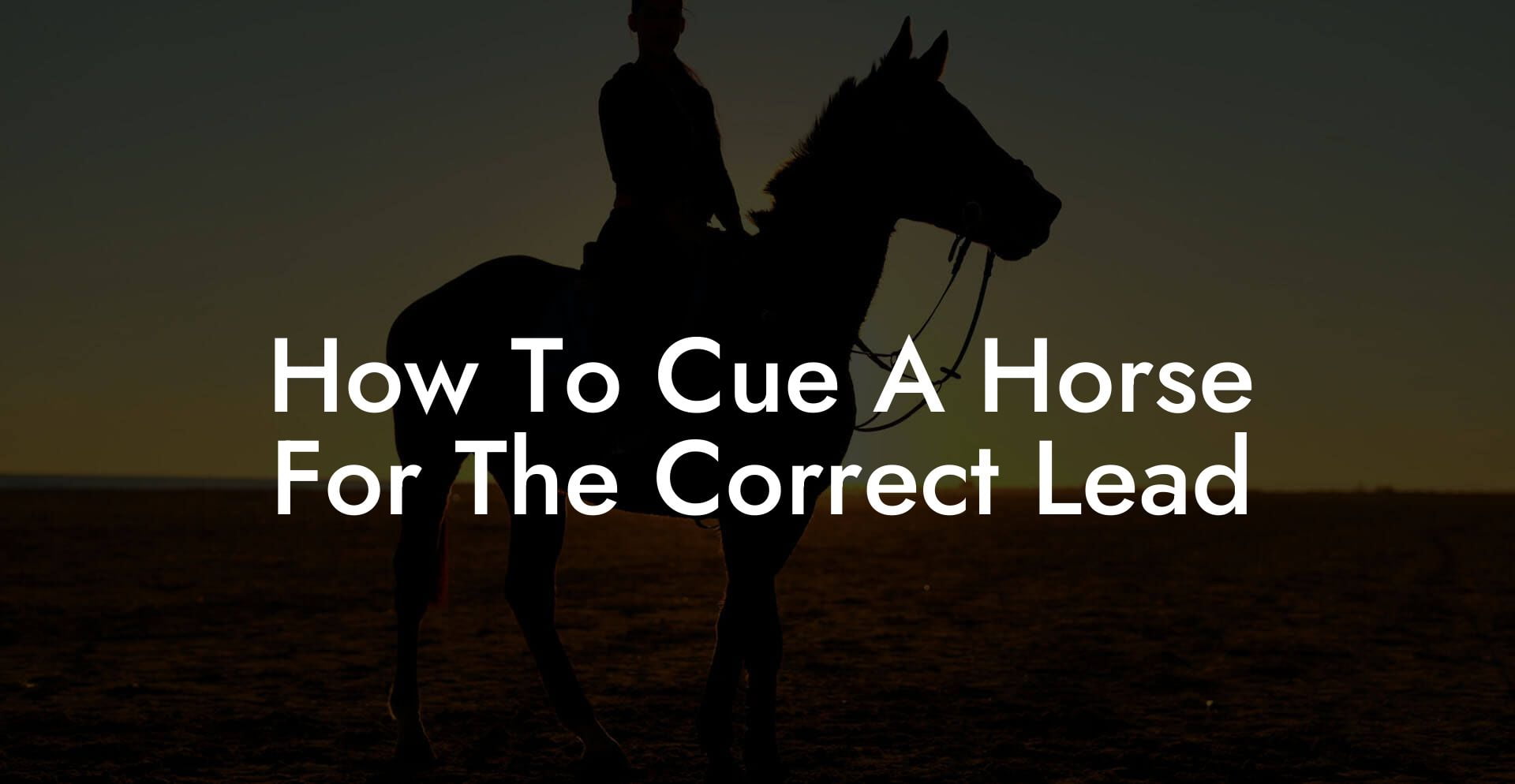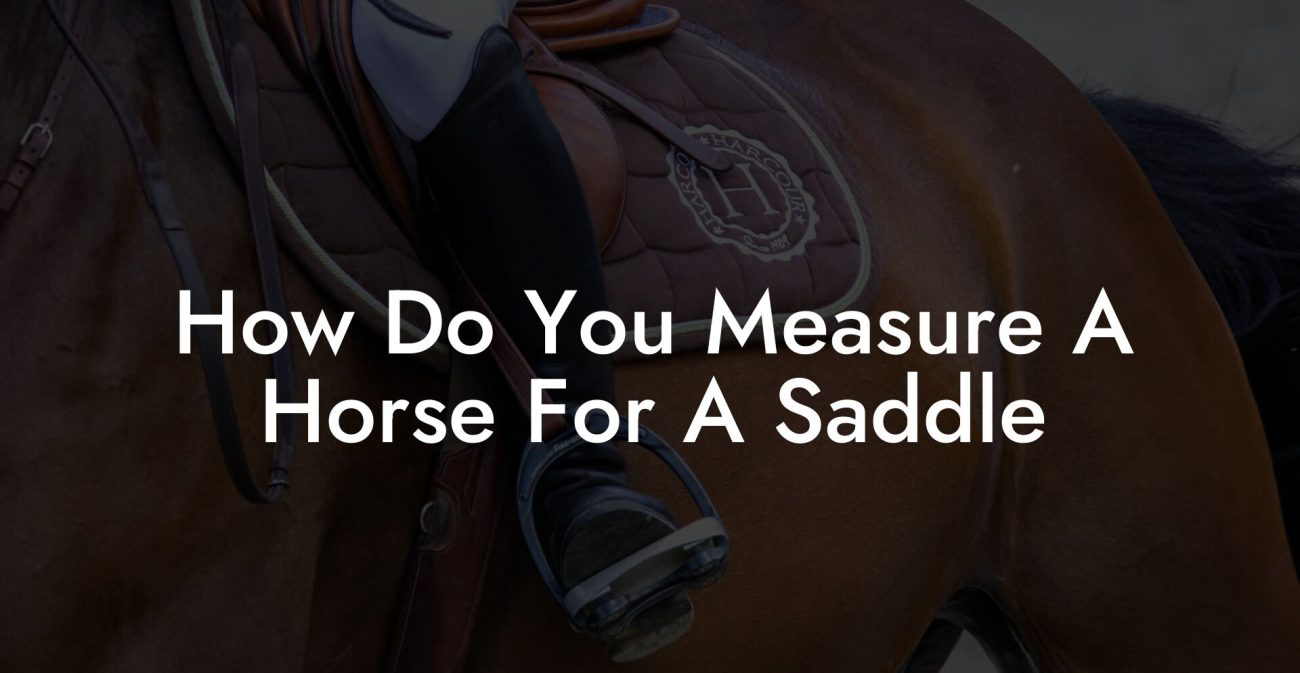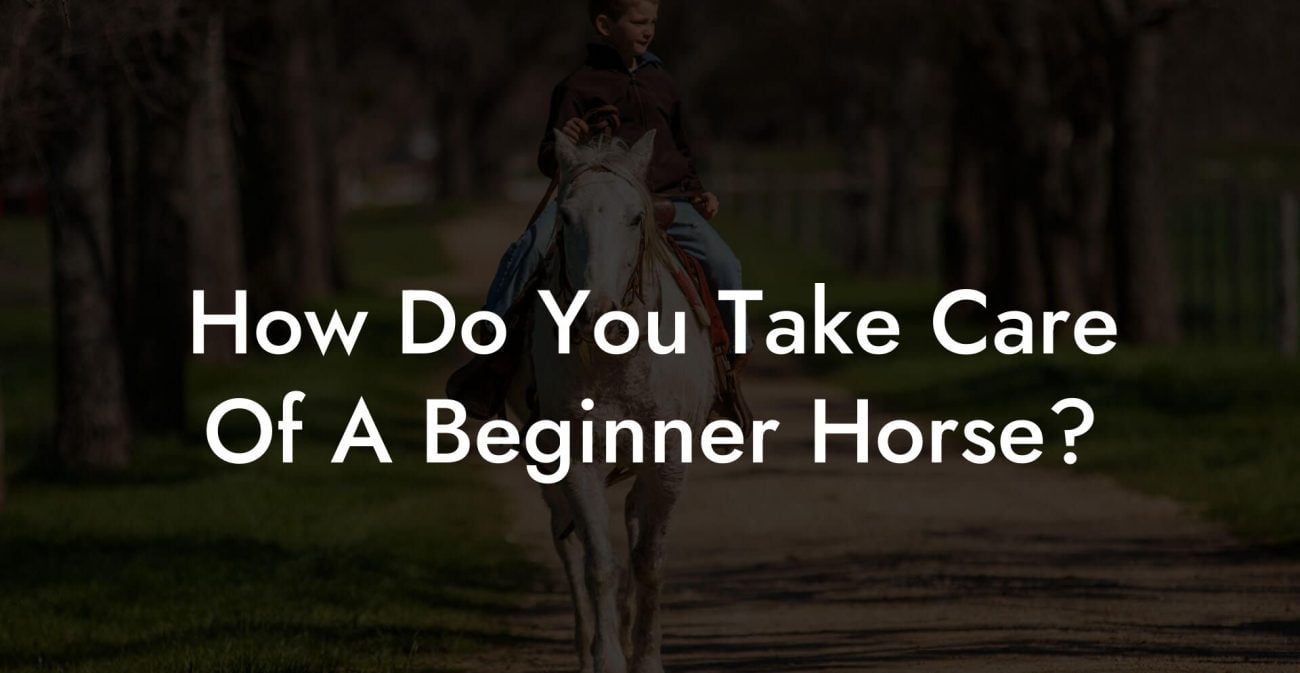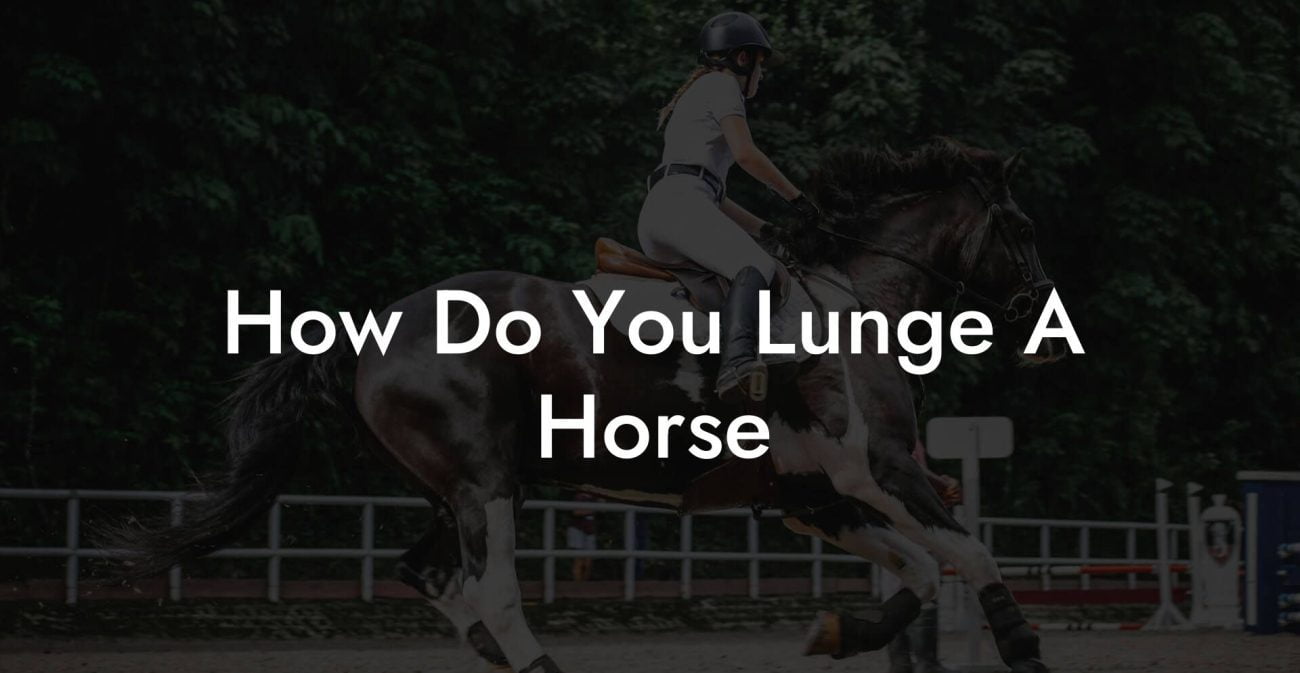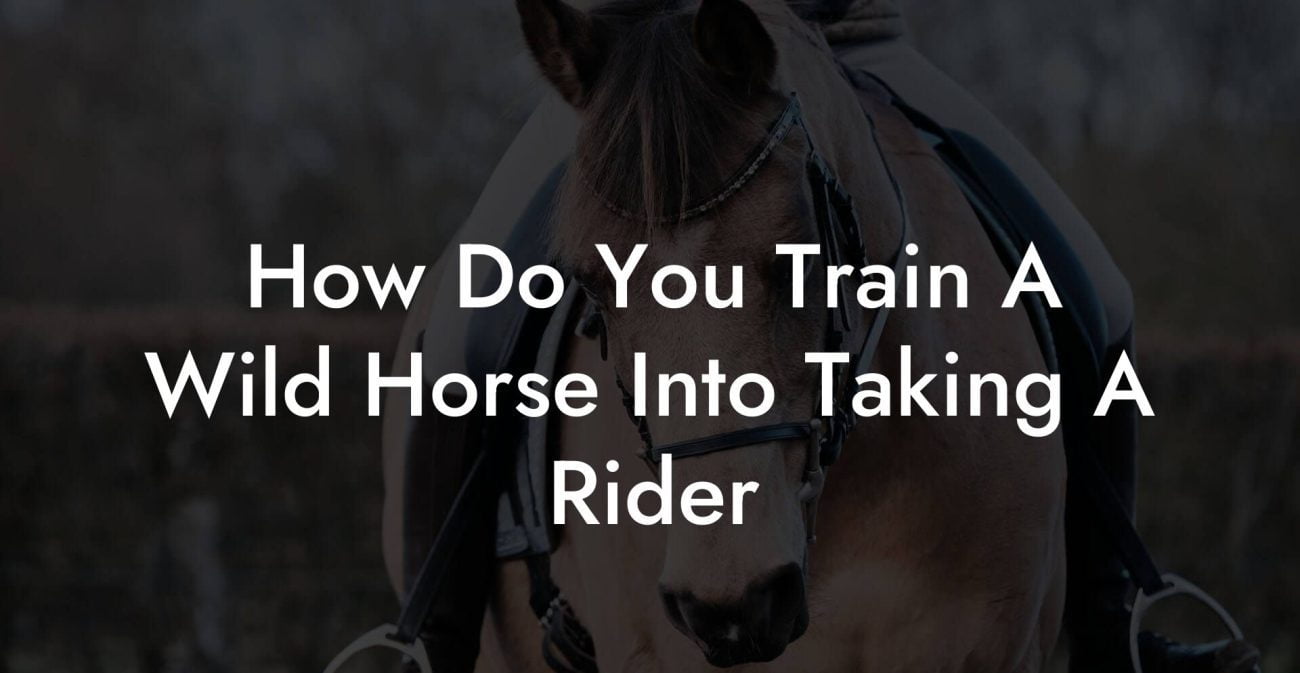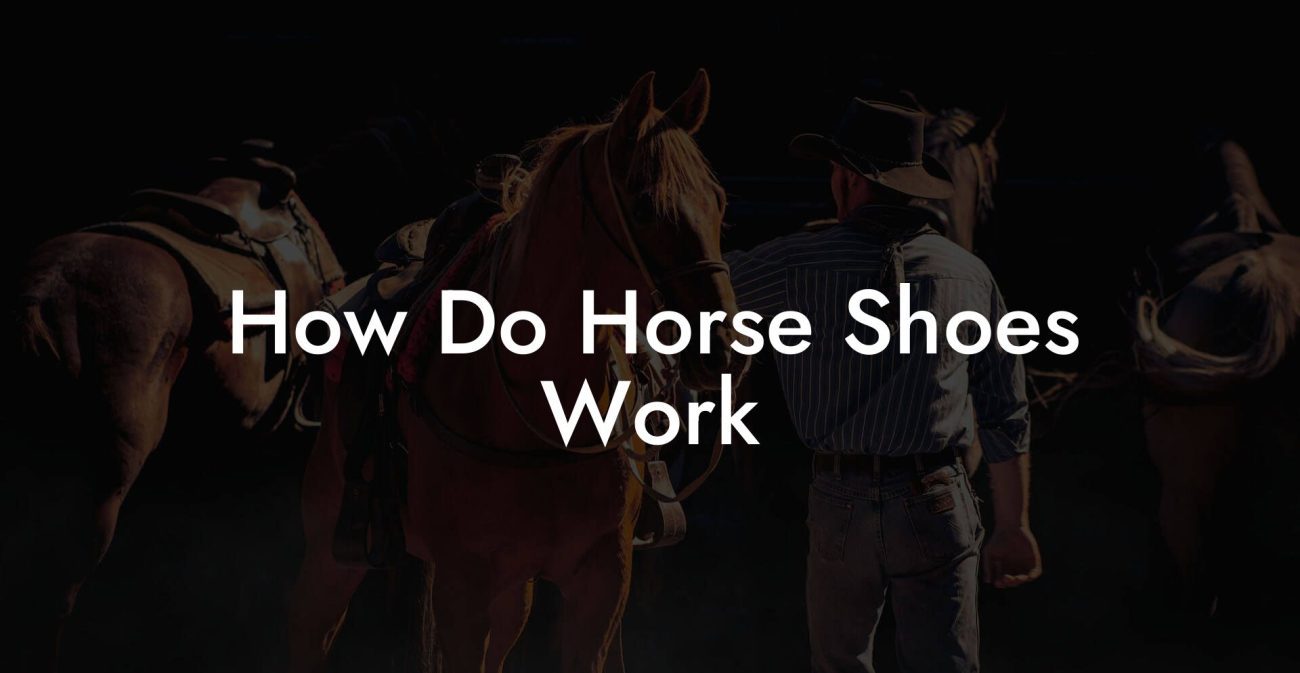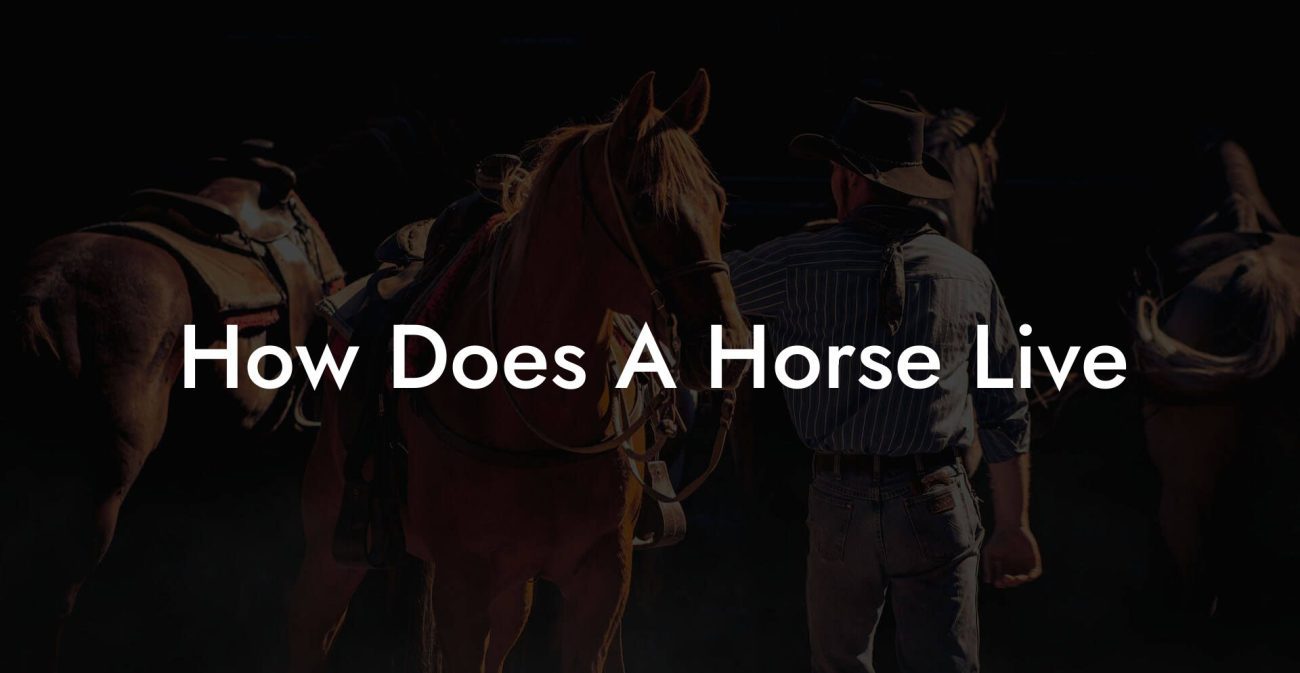Ever been out on a trail and wondered why your once-spirited steed starts to zigzag like a lost GPS? Cueing a horse for the correct lead isn’t just about pointing your finger and crossing your heart, it’s a subtle art blending instinct, psychology, and a dash of millennial magic to create harmony between you and your four-legged friend. If you’re ready to dive into the world of equine communication that feels as refreshing as a double-shot espresso, buckle up! This guide is your backstage pass to mastering cues, reading body language, and transforming everyday rides into elegant dances.
Quick Links to Useful Sections
- Understanding the Equine Mind and the Basics of Cueing
- The Science Behind Equine Cues and Communication
- The Art of Visual Cues: Speak Horse Without Saying a Word
- Voice Commands and Auditory Cues: The Soundtrack of Your Ride
- Step-by-Step Guide: Cueing Your Horse for the Correct Lead
- Step 1: Establish Connection and Trust
- Step 2: Read the Room… or the Horse
- Step 3: Use a Combination of Cues
- Step 4: Practice in a Controlled Environment
- Step 5: Gradually Increase Complexity
- Troubleshooting Common Mistakes in Cueing
- Inconsistent Signals
- Overloading with Cues
- Ignoring the Horse’s Feedback
- Rushing the Process
- Adapting Cueing Techniques for Various Riding Disciplines
- Integrating Technology and Modern Tools in Equine Cueing
- Resources and Community Support: Your Next Steps
- Mastering the Nuances: Advanced Techniques in Cueing
- Real-Life Success Stories: Transformations Through Effective Cueing
- The Journey of Alex and Midnight
- Mia’s Transformation from Frustration to Flow
- Jake’s Innovative Integration with Technology
- Embracing a Holistic Approach to Horsemanship
- Frequently Asked Questions About Cueing a Horse for the Correct Lead
- Your Journey to a Seamless Ride
Understanding the Equine Mind and the Basics of Cueing
Horses are more than just beautiful, majestic creatures, they’re living, breathing puzzles of emotion, physical prowess, and instinct. Think of them as the original influencers; they talk to you through a flick of their ear, a twitch of their nostril, or even a subtle shift in weight. Understanding how they perceive your cues is the first step toward mastering the art of riding.
At its core, cueing a horse refers to the signals (both visual and auditory) you use to guide your horse into taking the correct lead. Whether you’re changing direction mid-gallop, transitioning through a dressage movement, or simply guiding your equine companion to a new path, every gesture counts. Integrating keywords like “horse training,” “lead cues,” and “equine communication” naturally throughout your practice will enhance not just the smoothness of your ride but your digital footprint as a modern horse enthusiast.
Cueing is all about respect: acknowledging your horse’s natural instincts while aligning them with the objectives of your ride. The more in tune you are with your horse’s natural rhythms, its stride, its balance, and its pace, the more impressive your communication becomes. In a world where horse-related content is booming online, blending traditional wisdom with modern techniques ensures that you’re not only riding with style but also riding to the top of search engine results.
The Science Behind Equine Cues and Communication
With a history as rich as a millennial’s Spotify playlist, equine communication traces its roots back to the wild, untamed days of the frontier. Recent research reveals just how sensitive horses are to both body language and subtle cues. Their acute senses make them highly responsive and, in some ways, a lot like us on a caffeine rush.
When you cue a horse, you’re leveraging an intricate system that involves:
- Visual cues: The angle of your body, the direction of your gaze, and the position of your arms.
- Tactile cues: The pressure of your legs, the tension of your reins, and the gentle nudges of your seat.
- Auditory cues: Voice commands, subtle sounds, or even the cadence of your speech can work wonders.
This multifaceted approach means that every ride is a conversation, a dialogue that requires listening, observation, and a willingness to experiment. Integrating these cues seamlessly into your riding routine builds trust with your horse while elevating your riding from a mere activity to a fully immersive experience.
Modern horse trainers are now embracing scientific methods alongside time-tested traditions. From analyzing muscle memory in equine athletes to using wearable technology for performance tracking, the horse training world is evolving faster than you can say “neigh.” This innovative blend of tradition and technology ensures that your cues are both impactful and backed by measurable progress.
The Art of Visual Cues: Speak Horse Without Saying a Word
Visual cues hold the spotlight when it comes to captivating and commanding a horse’s attention. Imagine directing a TikTok dance, every movement, every gesture, plays a profound role. For equine cueing, it’s no different. Your physical presence, your body language, and even the way you position your legs can broadcast exactly what you want your horse to do.
Posture is Key: A confident, upright posture conveys authority. If you’re slouching or appearing unsure, your horse can sense the hesitation and may mirror that uncertainty. Stand tall, keep your head high, and let your posture exude calm and determination.
Hand and Arm Movements: Gentle yet firm gestures with your hands and arms, such as a slight lift of the reins or a pointing gesture in the direction of the desired lead, can signal your intentions without a single word. Think of it as the equine version of a silent TikTok trend, subtle, but incredibly effective.
Eye Contact: There’s an unspoken language in the way you lock eyes with your horse. A steady gaze tells your horse, “I’ve got this,” while a distracted look might invite miscommunication and deviation from the plan. For Gen-Z and millennial riders used to constant eye contact with their smartphones, transferring that skill to your riding might just be the edge you need.
By mastering visual cues, you harness the power of non-verbal communication, a timeless method that speaks louder than any verbal command in the quiet language of trust and mutual respect.
Voice Commands and Auditory Cues: The Soundtrack of Your Ride
While visual cues form the foundation of effective communication, never underestimate the power of your voice. Auditory cues and voice commands are like the bass line in your favorite song, they provide structure, rhythm, and an unmistakable signal to your horse.
Keep It Simple: Your horse isn’t looking to decode Shakespearean soliloquies. Simple, consistent commands such as “left lead,” “right lead,” or even a well-timed “whoa” in the right context can work wonders. The key is consistency, use the same words, tone, and cadence so your horse knows exactly what to expect every time.
Modulate Your Tone: A firm, calm, and assertive tone communicates authority and confidence. In contrast, a shaky or uncertain voice may create confusion. Imagine if every time you texted a friend, your tone changed unexpectedly; your horse experiences a similar jolt when commands aren’t uniform.
Integrate with Physical Cues: Voice commands work best when paired with visual or tactile signals. Your voice can act as reinforcement to a subtle hand gesture or a slight lean. This multi-channel approach reaffirms your instructions and helps in creating a seamless transition.
For the tech-savvy modern rider, incorporating auditory cues is as natural as using voice assistants in your everyday life. With practice, your commands will become the familiar soundtrack that guides your horse smoothly through every maneuver.
Step-by-Step Guide: Cueing Your Horse for the Correct Lead
Let’s break down the process into a series of steps that even your most tech-obsessed friend could follow. Cueing a horse correctly is all about timing, precision, and a sprinkle of personality. Here’s how to do it:
Step 1: Establish Connection and Trust
Before any cueing begins, ensure your horse feels connected to you. Spend time grooming, talking gently, and simply hanging out together. This builds rapport and reassures your horse that you’re a trusted partner rather than a random human with a misplaced sense of urgency.
Step 2: Read the Room… or the Horse
Observe your horse’s body language. Do its ears swivel in your direction? Is it relaxed or tense? This is your cue to decide which lead is most natural for your horse. A horse that’s calm and responsive will be more likely to follow subtle cues seamlessly.
Step 3: Use a Combination of Cues
Now, integrate the visual, auditory, and tactile signals. For instance, if you want your horse to adopt the left lead:
- Visual Cue: Shift your body slightly to the left and point your lead hand in that direction.
- Tactile Cue: Apply gentle pressure with your left leg to signal the change.
- Voice Command: Calmly say “left lead” in a firm, clear tone.
This comprehensive cueing method not only reinforces your command but also aligns your horse’s natural movement with your intended direction.
Step 4: Practice in a Controlled Environment
Start in a safe, open area, like an arena or a quiet pasture, where distractions are minimal. Consistent practice in a controlled setting builds muscle memory for both you and your horse. Think of it as the equine equivalent of perfecting your TikTok dance routine before going viral.
Step 5: Gradually Increase Complexity
Once you and your horse have mastered the basic cues, it’s time to integrate these skills into more challenging scenarios. Try cueing during transitions, on varied terrain, or even in the midst of a competitive routine. With each session, tweak your cues based on your horse’s feedback until you achieve a seamless connection.
Mastering these steps demands patience and persistence, qualities that every modern rider, juggling busy schedules and digital distractions, can appreciate. Remember, every expert was once a beginner, and every ride is a step toward a more harmonious partnership.
Troubleshooting Common Mistakes in Cueing
Even the most seasoned riders encounter hiccups on their journey toward perfect cueing. Recognizing these pitfalls is half the battle. Let’s address some common missteps and how you can avoid them:
Inconsistent Signals
If you’re mixing up your hand gestures, voice commands, or the pressure applied by your legs, your horse might get confused faster than a millennial at a rotary phone exhibit. Keep your cues consistent and practice them until they become second nature.
Overloading with Cues
Sometimes less is more. Overloading your horse with too many signals at once can lead to hesitation or even resistance. Focus on one or two cues per transition to ensure clarity.
Ignoring the Horse’s Feedback
Your horse is telling you something with every twitch, snort, and glance. If your cue isn’t working, pay attention, maybe your timing is off, or perhaps your horse isn’t feeling its best. Adjust your approach and take a moment to reconnect before trying again.
Rushing the Process
Cueing isn’t a race. Rushing through commands can create tension and disrupt the natural flow of your ride. Instead, take your time and let each cue settle. Your horse will appreciate the patience, and so will your relationship.
By troubleshooting these pitfalls early, you not only improve your technique but also build a foundation of trust and responsiveness that will serve as the backbone of all your equine adventures.
Adapting Cueing Techniques for Various Riding Disciplines
Whether you’re a trailblazer, a competitive dressage rider, or a country-style cowboy, the art of cueing a horse adapts to every discipline with finesse. The core principles remain the same, yet the application varies from arena to arena.
Trail Riding: When you’re out on off-road adventures, cueing needs to be clear and instinctive. Use strong visual and tactile signals to negotiate rough terrain and obstacles. A harmonious sync between you and your horse ensures that every twist and turn feels like a carefully choreographed scene.
Dressage: In the precision world of dressage, every cue is like a brushstroke on a living canvas. Here, subtle shifts in body weight, delicate changes in leg pressure, and perfectly timed voice commands are essential. Your horse should respond to cues with elegance, reflecting the artistry demanded by the sport.
Western Riding: Western disciplines place a premium on relaxed communication and a strong bond built over time. Cueing in western riding might incorporate elements like a gentle kick, a soft cue with the reins, and a natural twang in your voice. These cues emphasize the relaxed yet confident spirit of the western tradition.
Each discipline has its own flavor, but at the heart of it, cueing remains a universal language, a dialogue between rider and horse that transcends style and breed. Embrace the differences, experiment with techniques, and always aim for that clear connection that ultimately brings you and your horse into perfect sync.
Integrating Technology and Modern Tools in Equine Cueing
In an era where smartphones, smartwatches, and even smart refrigerators are commonplace, why should horse training be left behind? Integrating modern technology into your cueing routine can streamline your training, track progress, and even add a dash of fun to your practice sessions.
Wearable Sensors: Devices that monitor your horse’s heart rate, stride consistency, and muscle activation offer real-time insights into performance. Pairing these with video recordings can help identify subtle areas where your cues might need refinement.
Mobile Apps and Tracking Software: Record your sessions and log progress with specialized apps designed for equine training. These tools often provide analytics and personalized recommendations, making your training even more data-driven and effective.
Virtual Training Communities: Join online groups and forums where trainers and enthusiasts share tips, video tutorials, and success stories. Platforms like Instagram, YouTube, and TikTok are brimming with content that can spark new ideas and add a modern twist to traditional practices.
Combining the best of tradition with modern technology not only elevates your training regimen but also ensures you remain at the forefront of equine innovation. It’s all about merging the analogue charm of horse whispering with the digital precision of modern analytics.
Resources and Community Support: Your Next Steps
The journey to mastering horse cueing is a marathon, not a sprint. Surround yourself with a community that shares your passion. Connect with fellow riders, trainers, and even equine enthusiasts online and in person. Here are some ways to fuel your journey:
- Join Equine Forums and Social Media Groups: Platforms like Facebook, Reddit, and specialized equestrian forums are treasure troves of advice, shared experiences, and expert tips.
- Attend Workshops and Clinics: Look for local and national workshops where you can learn directly from seasoned professionals. Hands-on sessions, live demonstrations, and peer interactions are priceless.
- Follow Modern Equestrian Influencers: Embrace innovative perspectives by following influential trainers and riders on Instagram, TikTok, and YouTube.
- Enroll in Online Courses: Supplement your hands-on experience with digital learning. Numerous online courses cover everything from basic cueing techniques to advanced equine psychology.
- Consult with Professional Trainers: Sometimes a personalized approach is key. Don’t hesitate to seek one-on-one training sessions that address your specific needs.
Your next steps are about building a support network that fosters growth, offers constructive feedback, and celebrates every victory, no matter how small. Embrace this journey with an open mind and a readiness to learn, and you’ll soon find that cueing your horse becomes as natural as scrolling through your favorite social feed.
Mastering the Nuances: Advanced Techniques in Cueing
Once you’ve nailed down the fundamentals, it’s time to explore the more nuanced aspects of cueing that push your horsemanship to the next level. Advanced techniques take your partnership with your horse from functional to phenomenal.
Subtle Transitions: Advanced riders develop a keen ability to cue transitions smoothly. Instead of abrupt changes, work on graduating pressure and releasing at strategic moments. This fluidity keeps your horse relaxed and engaged throughout more challenging movements.
Rhythmic Cueing: Think of your ride as a carefully choreographed routine where every cue lands in sync with the horse’s natural rhythm. Practice cueing in alignment with your horse’s stride, making sure that each step feels like part of a larger, harmonious dance routine.
Dual-Tasking: Sometimes, the environment demands that your horse not only change lead but also maneuver around obstacles or respond to sudden distractions. Train for dual-task scenarios where you cue while maintaining situational awareness, creating a robust response mechanism that will impress fellow riders and judges alike.
With these advanced techniques, cueing becomes less of a set of instructions and more of an intricate interaction, a true conversation between you and your horse that speaks volumes of your refined horsemanship.
Real-Life Success Stories: Transformations Through Effective Cueing
Nothing speaks louder than the real-life success stories of riders who have turned their experiences around with consistent, effective cueing. Let’s take a look at a few inspiring journeys:
The Journey of Alex and Midnight
Alex, a passionate rider with a hectic social media schedule, struggled with getting Midnight, a spirited mare with her own opinions, to adopt the correct lead during transitions. After dedicating weeks to a routine that blended clear body language cues, synchronized voice commands, and digital video analysis, Alex transformed their rides into a fluid, effortlessly mesmerizing performance. Their breakthrough not only saved time on the trails but also boosted their online following, proving that effective cueing is the secret sauce for both harmony and social clout.
Mia’s Transformation from Frustration to Flow
Mia’s journey is a testament to patience and persistence. Initially frustrated by a stubborn stallion who disliked lead changes, Mia revamped her approach by delving into the science of tactile cues. By harnessing consistent leg pressure and gentle reins adjustments, Mia discovered a method that resonated with her horse’s natural rhythm. Over time, what began as a battle of wills turned into a well-choreographed routine, leaving Mia not only more confident in the saddle but also more invested in a deeper, more intuitive form of communication.
Jake’s Innovative Integration with Technology
In the digital age, Jake fused high-tech tools with traditional horse training. Using wearable sensors coupled with video analysis apps, he was able to pinpoint subtle hesitations and adjust his cues accordingly. The result? A transformative training session where every cue was on point, and his horse responded with a vigor that mimicked a perfectly synchronized dance routine. Jake’s story highlights how embracing modern tools can lead to extraordinary breakthroughs in the age-old art of communication.
Each of these success stories is a vivid reminder that effective cueing isn’t reserved for the elite, it’s a journey that any rider, regardless of experience, can embark upon. With dedication, creativity, and a dash of innovation, you too can transform your relationship with your horse from routine to remarkable.
Embracing a Holistic Approach to Horsemanship
Cueing a horse for the correct lead is more than a set of mechanical steps or a list of commands, it’s a holistic practice that intertwines body, mind, and technology. Successful horsemanship demands a balanced approach that considers not only the immediate cues but the overall well-being and communication dynamic between you and your horse.
Think of it as similar to curating your perfect morning routine: you blend mindfulness, physical exercise, and tech-savvy check-ins to set the tone for the day. In riding, you blend consistent cues, emotional sensitivity, and adaptive strategies to create a seamless partnership. The result is a ride that’s as smooth as your favorite playlist and as engaging as the latest viral trend.
This holistic approach empowers you to not only improve your riding techniques but also to foster a deeper bond with your horse. It’s about appreciating the subtle interplay between your cues, your horse’s reactions, and the environment around you, each ride becomes a mindful meditation on movement, trust, and connection.
Frequently Asked Questions About Cueing a Horse for the Correct Lead
Below are some of the most common questions riders have when it comes to cueing their horse for the correct lead. Whether you’re a beginner or a seasoned pro, these answers are designed to help you get the most out of your training sessions.
1. What does it mean to cue a horse for the correct lead?
It means using a mixture of visual, tactile, and auditory signals to guide your horse into taking the desired lead. This efficient blend ensures that your horse responds accurately during transitions and changes in direction.
2. How important are body language and posture when cueing?
Extremely important. A confident posture, clear hand gestures, and consistent body movements are crucial to communicating with your horse quickly and clearly.
3. Can I use voice commands alone to cue my horse?
While voice commands are very effective, pairing them with visual and tactile cues creates a more robust and reliable form of communication with your equine partner.
4. How long does it take for a horse to reliably respond to a new cue?
Every horse is different, but with consistent practice and a patient approach, most horses show noticeable improvements in cue-response within a few weeks.
5. What if my horse does not respond to my cues initially?
Patience is key. Evaluate your consistency, watch for any miscommunication, and try breaking down cues into simpler components. Adjust your approach, and if necessary, consult with a professional trainer.
6. Can I practice cueing in different environments?
Yes! Start in a controlled setting and gradually introduce distractions. Varying environments help your horse generalize the cue, reinforcing reliability in any context.
7. How does technology help with cueing?
Modern tools like wearable sensors and mobile apps can provide real-time feedback on your horse’s responses, allowing you to refine cues and track progress over time.
8. Is it normal for my horse to sometimes ignore cues?
Absolutely. Just like humans, horses have off days. Consistency, a supportive environment, and adapting your technique goes a long way in re-establishing effective communication.
9. How do I prevent mixed signals during a ride?
Consistency is your best friend. Use the same cues and maintain a calm demeanor, ensuring every gesture, word, and adjustment reinforces your command.
10. Can cueing techniques be customized for each horse?
Yes, every horse is unique. Observing your horse’s responses and adjusting your cues accordingly builds a personalized communication system that works for both of you.
Your Journey to a Seamless Ride
In the end, cueing a horse for the correct lead is a transformative journey that enhances both your riding skills and the bond you share with your equine partner. With each cue, you’re not just guiding your horse, you’re engaging in a conversation, a silent yet eloquent dialogue that speaks of trust, patience, and mutual respect.
Whether you’re a seasoned rider or a curious beginner looking to explore the dynamic world of horse training, remember that every ride is an opportunity to learn, adapt, and evolve. The techniques you adopt today will serve as the foundation of a partnership that transcends riding classes and competitive events, a partnership that mirrors the modern search for balance, mindfulness, and mutual growth.
Embrace the challenges, celebrate the small victories, and keep refining your cues like the legendary influencer of equine training that you are. From the humble beginnings of subtle gestures and soft commands to the sophisticated interplay of technology and tradition, your journey is a vibrant tapestry of learning and achievement.
So, saddle up and let each step, each cue, and each shared moment of clarity set the stage for countless rides filled with empowerment, confidence, and a whole lot of hoofed swagger. Your adventure to mastering the art of cueing your horse for the correct lead has just begun, ride on!

